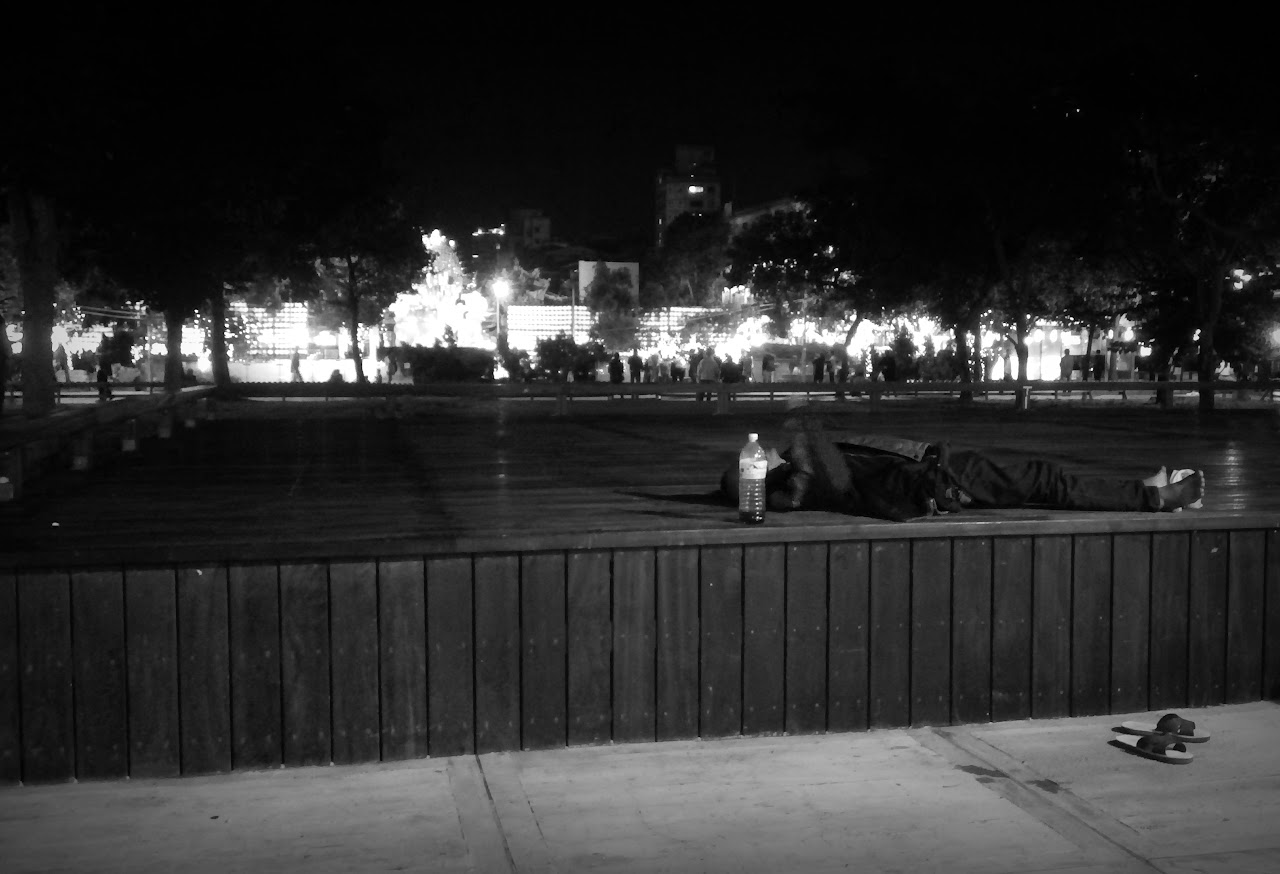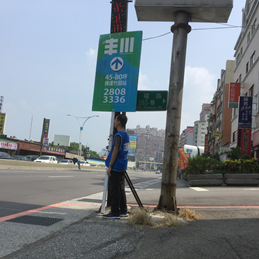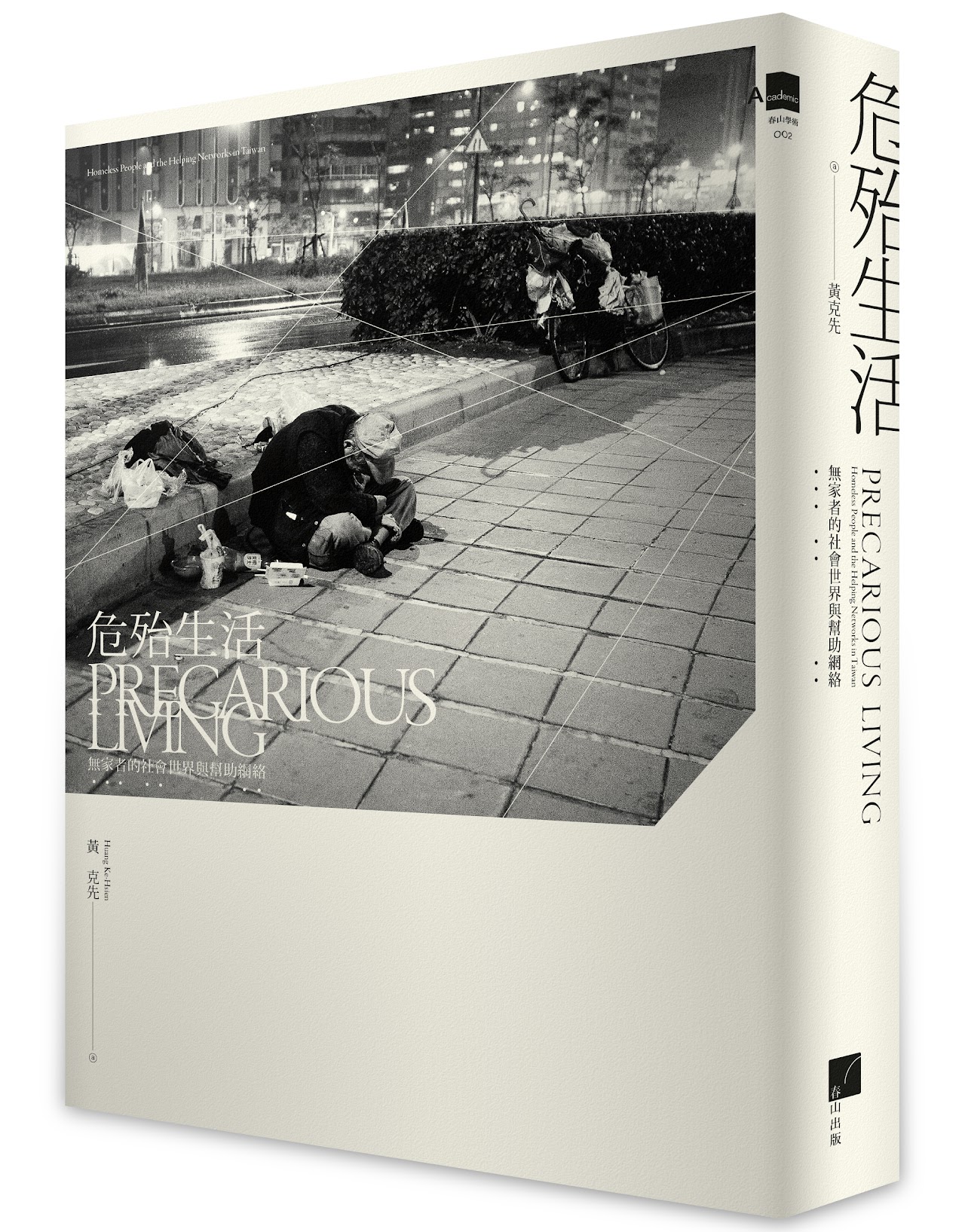We spoke to Ke-hsien Huang of National Taiwan University, on homelessness in Taiwan. You can find our conversation below.
Asia Art Tours: To start, could we review baselines on homelessness in Taiwan? How widespread is homelessness ? What are some key demographics? And what data or results from field research surprised you as a scholar?
Ke-hsien Huang: According to the most recent survey conducted by government officials, the number of homeless people in Taiwan is around 3,000, in which 70% are rough sleepers and the rest lodges in shelters; only 10% are female. Most homeless men are under-educated, elderly men who are locked in the secondary labor market of dangerous, dirty, difficult jobs without benefits or stability.
These statistics are just displaying the tip of the iceberg of Taiwan’s homeless problem . First, the way the government counts the homeless is strict and the number is seriously underestimated. For example, economically disadvantaged young people shuttle between internet cafés, saunas, cheap hostels, friends’ places and public spaces are not counted as homeless.
 Sign of a homeless individual in Taiwan. Photo Credit: Ke-hsien Huang
Sign of a homeless individual in Taiwan. Photo Credit: Ke-hsien Huang
Asia Art Tours: How successful has Taiwan’s recent DPP government been in addressing homelessness? And how does their approach differ from KMT policies?
Ke-hsien Huang: In general, the approach to the homeless problem of the DPP government is like that of the KMT. Their main concern is paying attention to the economic development and social welfare of middle-class voters. Local governments tend to sacrifice the rights of homeless people for aesthetics of urban space and interests of real estate owners in the projects of urban planning and local policing. Of course, compared to thirty years ago Taiwan’s government (both national and municipal) invests more of its budget and human power in keeping homeless people alive.
Nevertheless, how to better secure their rights of living a dignified life with basic quality has not been an important issue in the minds of Taiwan’s policy makers. The housing-first strategy, which has been proven effective in the U.S. and the rest of the world, has never been an option for the Taiwan state preferring the direction of liberalizing the real-estate and rental market.
In general, the approach to the homeless problem of the DPP government is like that of the KMT. Their main concern is paying attention to the economic development and social welfare of middle-class voters.
 A homeless man sleeping outside of Longshan Temple in Taipei. Photo Credit: Ke-hsien Huang
A homeless man sleeping outside of Longshan Temple in Taipei. Photo Credit: Ke-hsien Huang
Asia Art Tours: And compared to neighboring countries (Japan, S. Korea, China) has Taiwan’s approach to homelessness been more or less successful?
Ke-hsien Huang: In my opinion, no. In the past, Taiwan performed better than Japan and Korea, so officials from these countries used to visit Taipei to study Taiwan’s homeless policies. However, during these two decades, Japan and Korea have experienced more serious economic ups-and-downs than Taiwan, and more people in these countries became unhoused. Thus, their governments were forced to take action in making specific laws and housing policies to address homelessness.
Now, if we compare the rate of homeless people over whole populations (whether in the capital or in the whole country), the problem in Taiwan (or Taipei) is much more severe than Japan (Tokyo) and Korea (Seoul).
 A homeless man gathering recylables in Taiwan. Photo Credit: Ke-hsien Huang
A homeless man gathering recylables in Taiwan. Photo Credit: Ke-hsien Huang
Asia Art Tours: How do religions in Taiwan differ in their policies and perspective on homelessness?
Ke-hsien Huang: Historically, Taiwan’s religious communities have approached the homeless in a more inclusive and tolerant way. The economically disadvantaged were considered as part of the community; they were brothers and sisters we were obliged to care for.
However, individualism and neoliberal ideology have influenced Taiwan’s religious communities; now many religious groups regard the poor as sinners to be saved by “the Truth ” from bad habits and the wrong mentality. This tendency is more obvious in Protestantism (particularly evangelicalism) and other institutional religions. Thus, homeless people are disciplined and regulated more in their encounters with these religions.
For those Taiwanese believers in merit collection (most folk belief temples), what matters is their enactment of charity and recipients’ conditions are not their main concern.
Individualism and neoliberal ideology have influenced Taiwan’s religious communities; now many religious groups regard the poor as sinners to be saved by “the Truth ”.
 A precarious worker holding a sign advertising real-estate in Taiwan. He stands from 9am-5pm and is paid 800NTD for his labor. Photo Credit: Ke-hsein Huang
A precarious worker holding a sign advertising real-estate in Taiwan. He stands from 9am-5pm and is paid 800NTD for his labor. Photo Credit: Ke-hsein Huang
Asia Art Tours: How have you seen the media portrayal of homelessness evolve or not evolve in Taiwan? And what impact has this had on Taiwan’s Youth?
Ke-hsien Huang: In the past, homeless people were usually portrayed as deviants and criminals. Currently, more stories about how macro-level developments and governmental policies affect the homeless are being told in the media and advocated by NGOs. Hence, much of Taiwan’s younger generation feels more empathetic about homeless people since they share the same “fate” of not riding on the train of economic booms and being left behind by trends they cannot control.
Precarious Living is not only a scholarly work but also a book devoted to the general to understand the reality of homeless life in Taiwan, in order to think of a better, just, and dignified future for everyone on the island.
 Dr. Huang’s Book, Precarious Living: Homeless People and the Helping Networks in Taiwan. Photo Credit: Ke-hsien Huang
Dr. Huang’s Book, Precarious Living: Homeless People and the Helping Networks in Taiwan. Photo Credit: Ke-hsien Huang
Asia Art Tours: To conclude, you recently published, Precarious Living: Homeless People and the Helping Networks in Taiwan. For those interested in our conversation today could you introduce this book?
Ke-hsien Huang: The book is the result of one-year ethnographic work with dozens of interviews in the park famous for accommodating homeless individuals in Taipei. I depict how homeless people labor, socialize and live both private and communal lives in the public space. Although they are constrained by social structures and multiple stigmas, they are struggling hard to be agents of their own life. Their love, joy, passion, hatred, and suffering are displayed in the pages of the book.
There are many helping networks (including government, religion and food distributors) around, but the way of distributing these resources to homeless persons usually sabotages their dignity and downplays their social status. The last part of this book is devoted to the suggestion of Housing first policy and encouragement for ordinary people in participating in more activities with civil groups on homeless issues. Precarious Living is not only a scholarly work but also a book devoted to the general to understand the reality of homeless life in Taiwan, in order to think of a better, just, and dignified future for everyone on the island.
For more w. Dr. Huang you can visit his website here: https://sites.google.com/view/ke-hsienhuang/%E7%B0%A1%E4%BB%8B
His research here: https://taiwan.academia.edu/KehsienHuang
And his book can be found here: https://www.books.com.tw/products/0010906658?sloc=main
